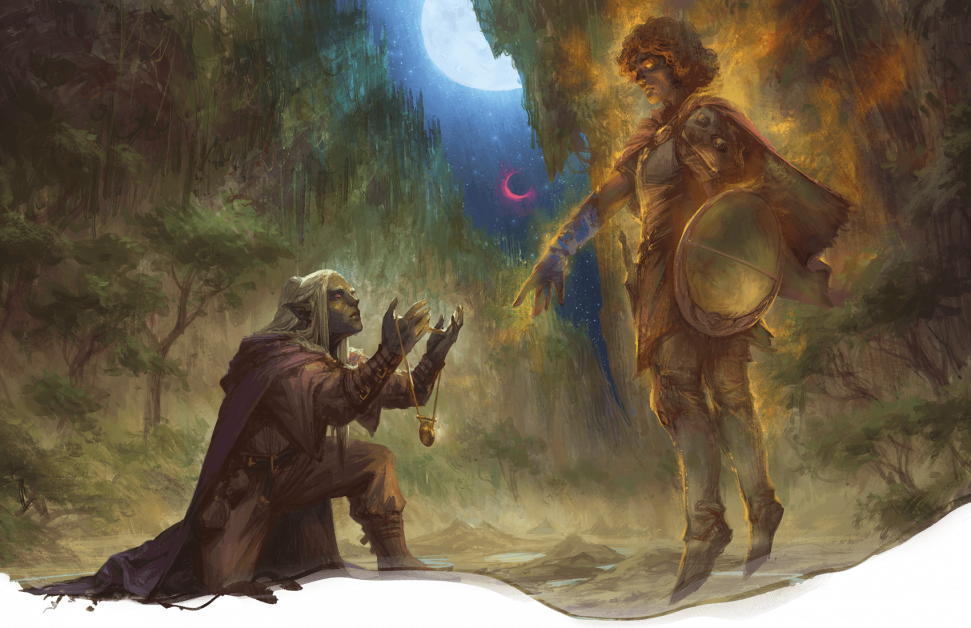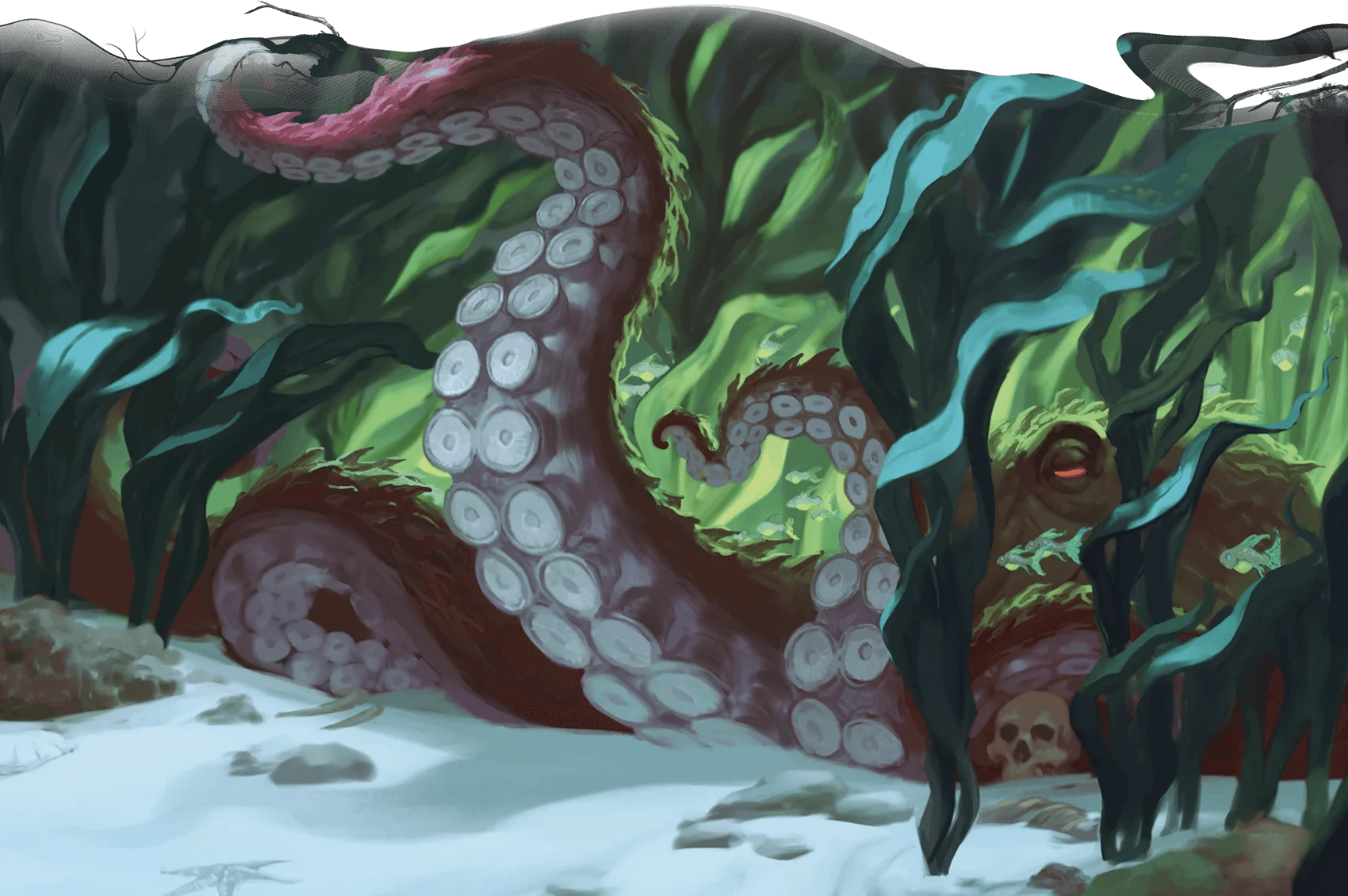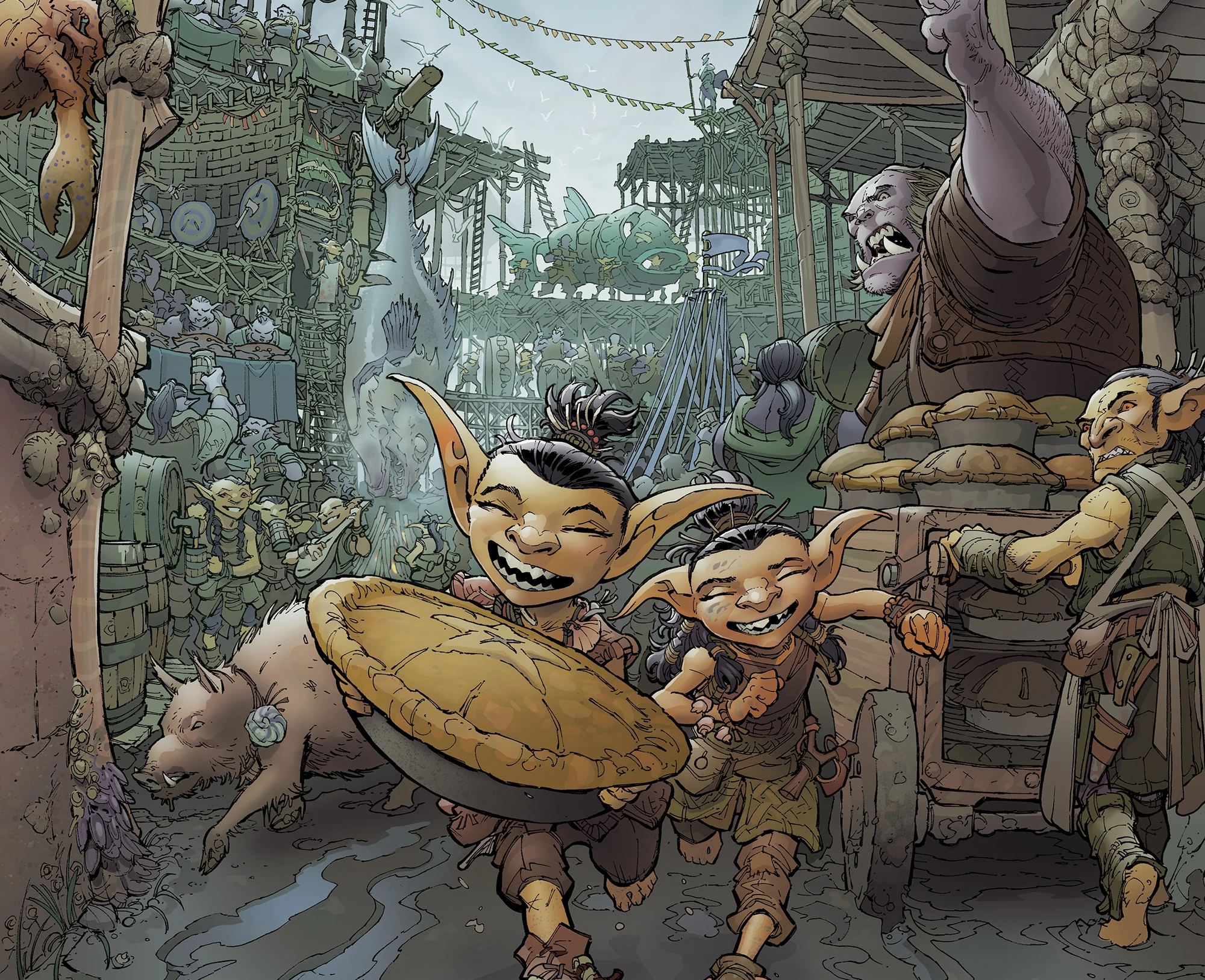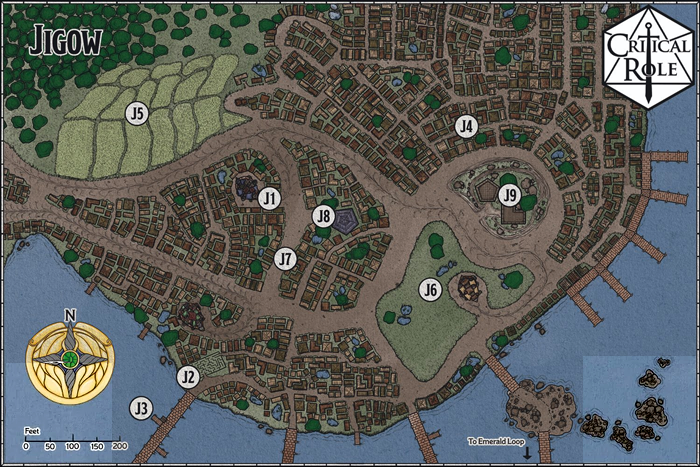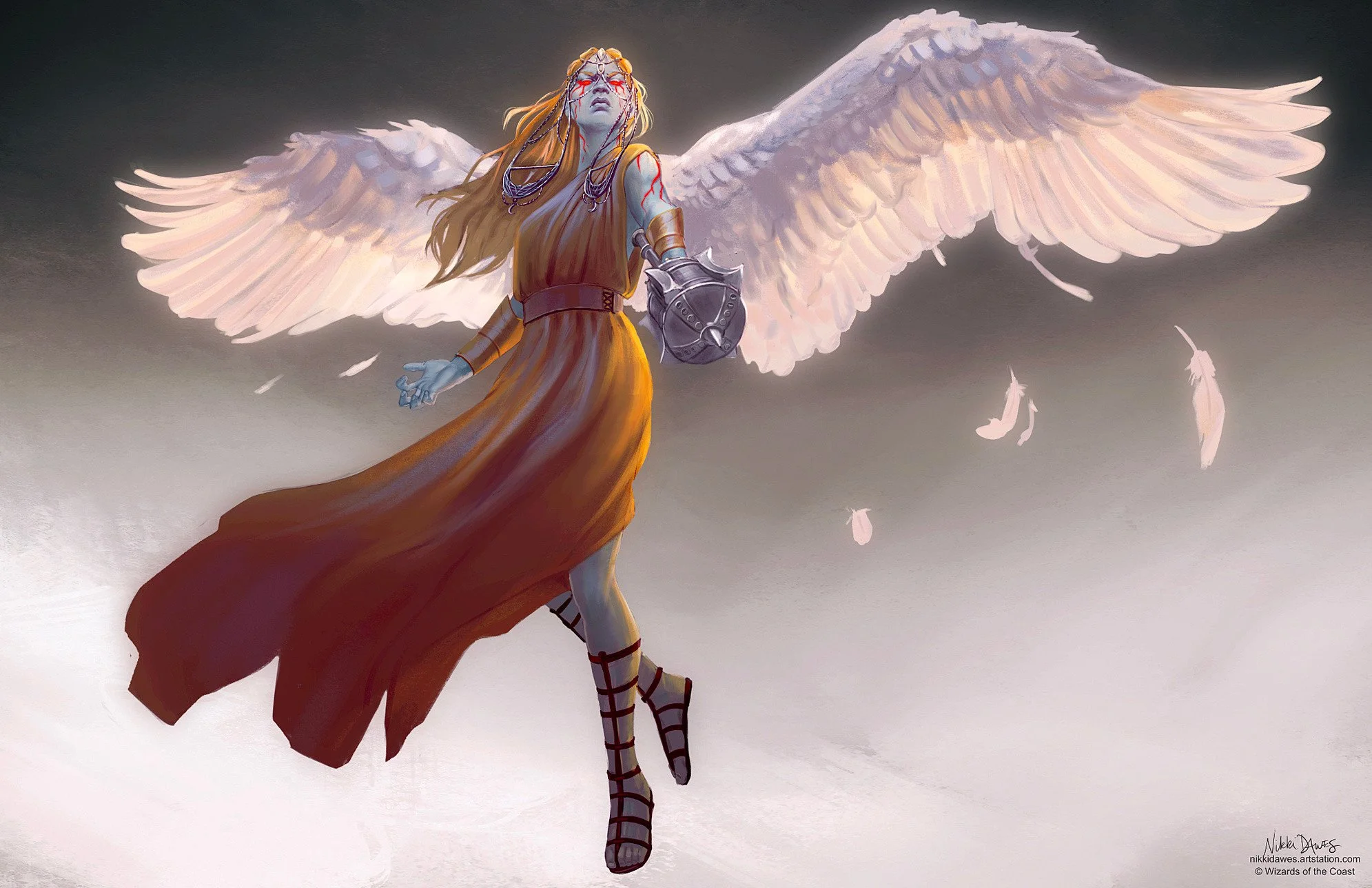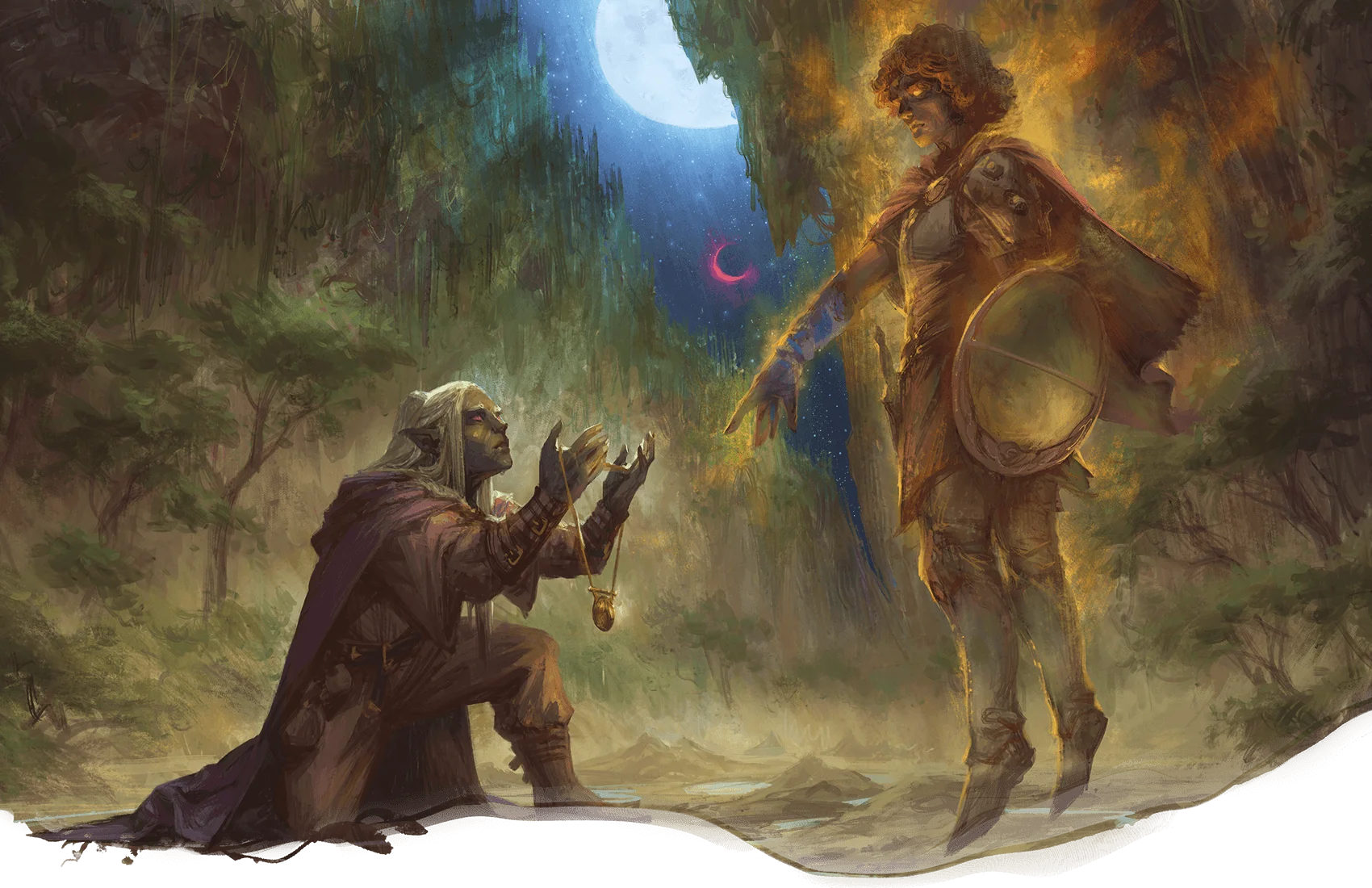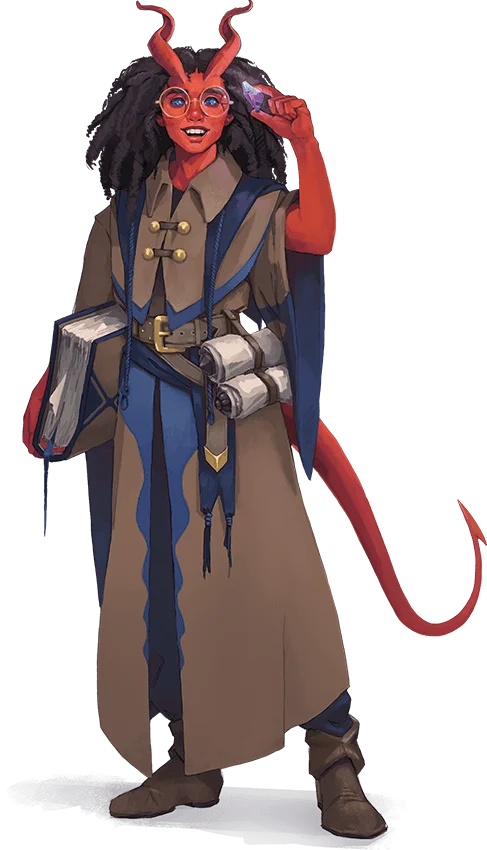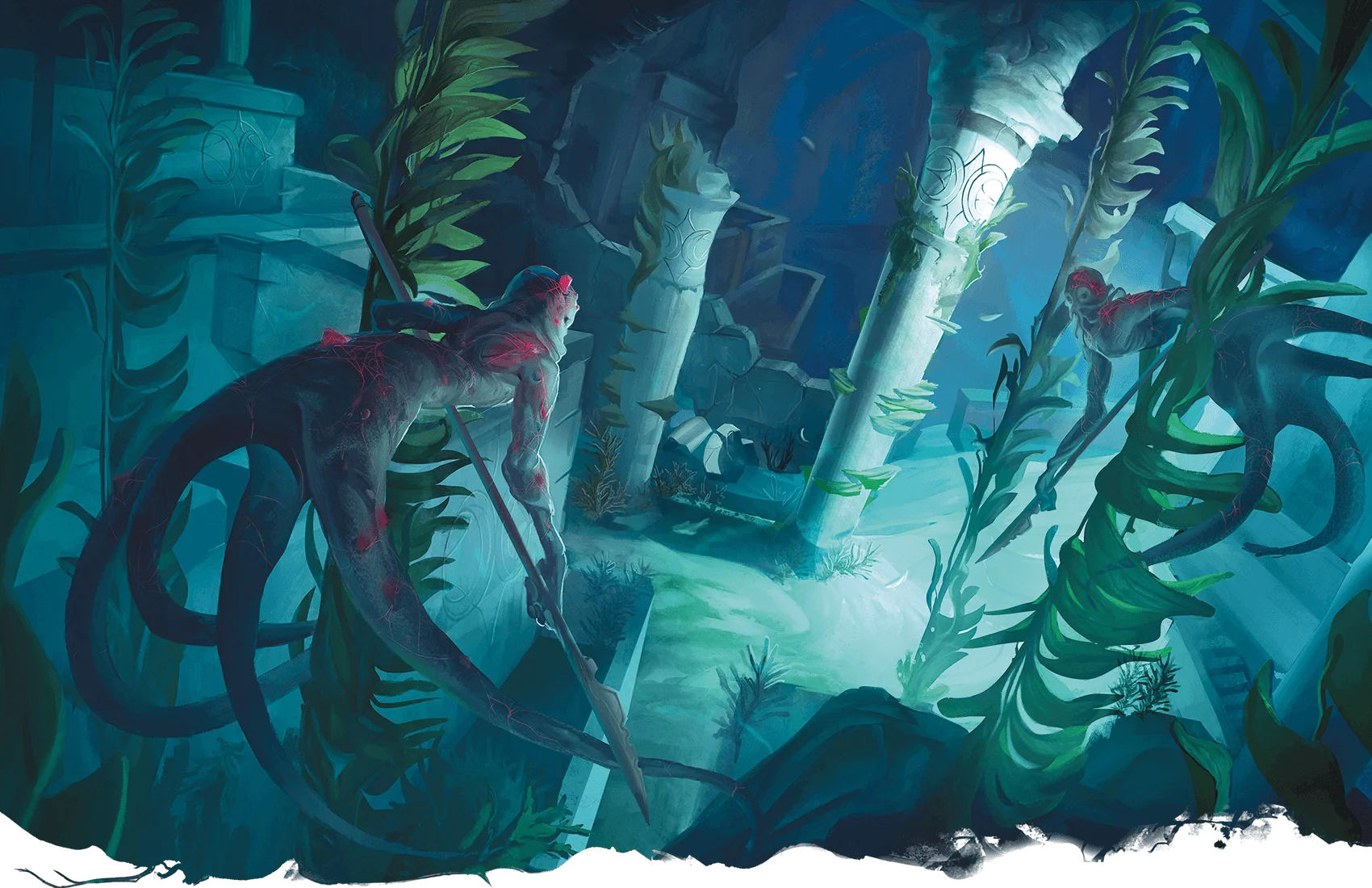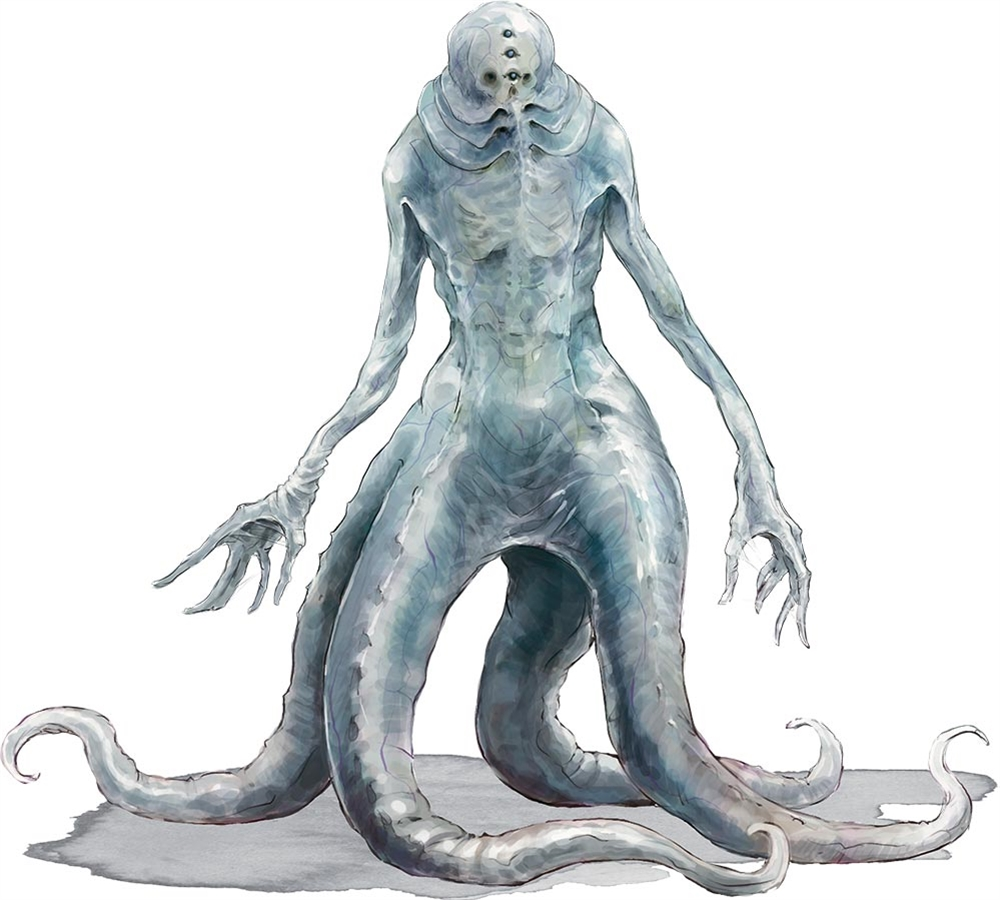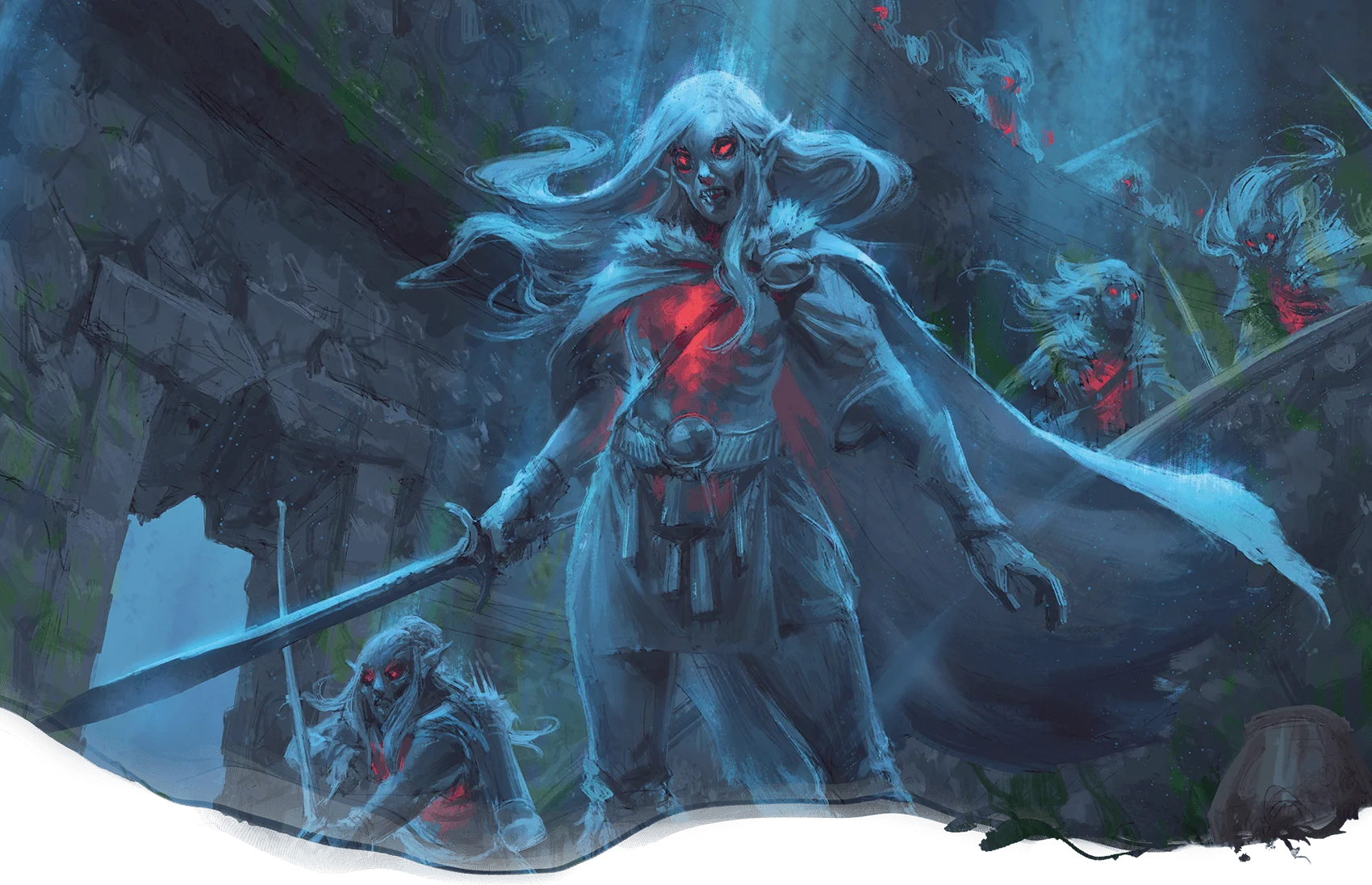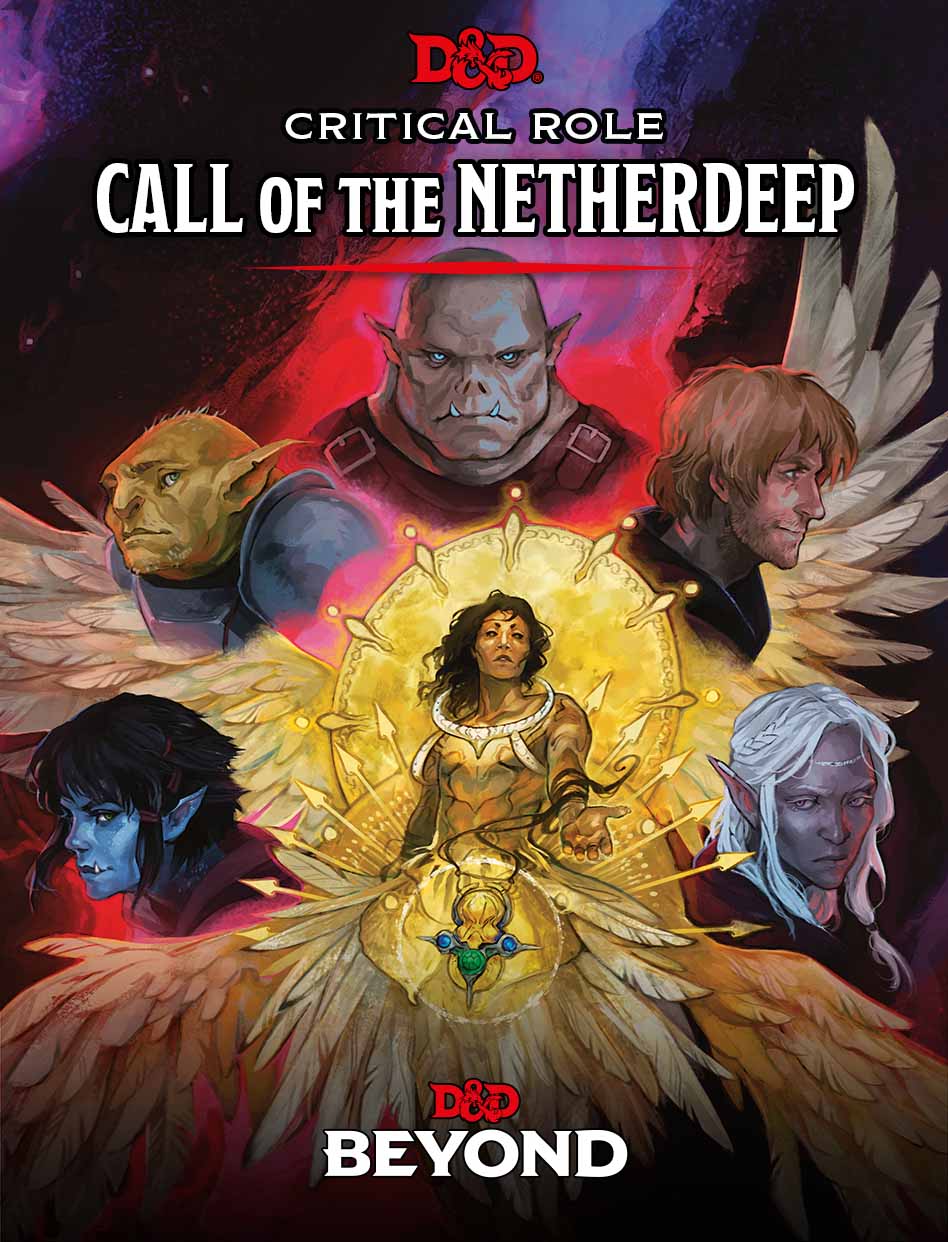At this point in Call of the Netherdeep, the PCs are supposed to (a) be aware of the Jewel of Three Prayers and (b) have received a vision of an unidentified prisoner who begs them for help (either directly or as a kind of psychic static if the Rivals were the ones who touched the Jewel first). Structurally, the PCs are now supposed to leave Jigow and head to Bazzoxan.
If the PCs have the Jewel, the transition works like this:
- Elder Ushru tells them he also had a vision of the same mysterious figure.
- He identifies the Jewel of Three Prayers as a Vestige of Divergence, i.e. “an enchanted relic from the time of the Calamity.”
- He tells them that they should go to Bazzoxan because “there is no place in Xhorhas where the memory of the Calamity lingers more strongly than in Bazzoxan.”
If the Rivals have the Jewel, the transition works like this:
- The PCs overhear someone saying that (a) the Jewel is worth at least 1,000 gp and (b) the Rivals have left town and are heading to Rosohna.
- ???
The idea seems to be that this will prompt the PCs to hunt down the Rivals and rob them. Although even if they do that, the campaign doesn’t really include any mechanism to then point the PCs towards Bazzoxan. So the connection here is either broken outright or outrageously fragile.
But even the first version of this hook is pretty problematic. The core problem is that the PCs are not actually given a reason to go to Bazzoxan. Yes, the “memory of the Calamity” lingers there, but that’s not actually a reason. To understand the distinction, consider the immediate follow-up question from the PCs: “And what do we do when we get there?”
If you can’t answer that question, then you don’t actually have a reason to go. This is why, when the PCs get to Bazzoxan, the book assumes they’ll just kind of wander around until they bump into the plot.
(There is, of course, a metagame reason for the players to have their characters go to Bazzoxan — the DM has mentioned a place name and is waggling their eyebrows suggestively. But (a) that’s a bad table experience and (b) doesn’t solve the underlying structural issue here.)
The other thing to ask yourself here is, “Why are the PCs even talking to Elder Ushru?” Well, because he had the vision, right?
But why did HE have the vision?
Because, in the absence of a reason to go to Bazzoxan, the adventure needs an NPC mouthpiece through which the DM can say, “You’re supposed to go to Bazzoxan.”
My rule of thumb, though, is that if I have an NPC doing something really cool (and I count receiving enigmatic visions from proto-gods on the list of really cool things), I should double-check and make sure I couldn’t design things so that the PCs get to do the really cool thing.
So let’s clean all of this up.
UNIVERSAL VISION
When anyone touches the Jewel of Three Prayers (whether it’s the PCs or the Rivals), everyone in the Emerald Grotto receives the vision of Alyxian the Apotheon.
This means that PCs and Rivals alike have a unique connection to the Apotheon and they have ALL received the campaign’s call to adventure, regardless of who actually ends up in possession of the Jewel of Three Prayers. This connection to the Apotheon, of course, can (and will!) persist through the entire campaign, drawing both PCs and Rivals inexorably towards the Netherdeep.
It also means that the vision can be used to clearly establish the bridge from Jigow to Bazzoxan. There are a couple of ways that we can do this.
EXPLICIT VISION
In the vision as written, Alyxian says:
“I am imprisoned, please help me.” […] “My name is Alyxian. I am lost in darkness. Long ago, I prayed to the Change Bringer in the heart of a temple of evil. I beg you, take my jewel and…”
The easiest fix here is to just change the vague reference to a “temple of evil” and make the call explicit:
“You must find me! You must bring the Jewel to the Cyst of Avandra within Betrayer’s Rise beneath Bazzoxan!”
This is every bit as direct as the DM waggling their eyebrows while pointing at the flashing neon sign saying, “The book says you need to go to Bazzoxan, dummies!” But, of course, it has the advantage of being diegetic: It’s the PCs, not the players, who are being given a clear instruction.
ENIGMATIC VISION
There are, however, a number of reasons why you might want the players to work for this a bit:
- I’ve previously mentioned Getting the Players to Care. One of the techniques described there is making something a mystery: the process of unraveling a secret will invest the players in the lore, and also give them a sense of accomplishment and reward when they figure it out.
- If they need to figure out what the vision meant, it will probably also focus their attention on the Jewel. (Whereas if they’re just explicitly told where to go next, they may not spend much time thinking about the Jewel at all.)
- While the PCs are taking action to figure out the Jewel and/or vision, you can use the actions they take as a vector for feeding in other Lore of Alyxian.
You can accomplish this by basically just stripping information out of the vision to dial in the desired level of enigma. For example:
“You must find me! You must bring the Jewel to the Cyst of Avandra within Betrayer’s Rise!”
… okay, but where’s Betrayer’s Rise? This is fairly easy to figure out (ask almost anybody or just look at a map of Xhorhas).
Or you can strip out even more information:
“You must find me! You must bring the Jewel to the Cyst of Avandra!”
Well, Avandra the Change Bringer is obviously well-known. But what and where is her “cyst”? The PCs now have two vectors they could pursue: The Cyst or the Jewel.
Note: I’m enigmatically referring to the Prayer Site of Avandra within Betrayer’s Rise (CotN, p. 72) as a “cyst” of good within the evil of that place.
And, of course, you can go one step further:
“You must find me! Bring my Jewel to me!”
Which would obviously leave the PCs with the Jewel as their only vector.
Regardless, your structural goal is to point the PCs in the direction of Bazzoxan. So, depending on the vectors you’ve provided, this ultimately boils down to:
- Identifying that the Cyst of Avandra lies within Betrayer’s Rise (e.g., it is said that during the time of the Calamity, Avandra blessed a site within Bazzoxan; it is described in some demonic texts as a “cyst” which blighted that temple of the Betrayers Gods).
- Discovering that the Jewel of Three Prayers is depicted on the walls of Betrayer’s Rise. (We previously looked at how this research might work when we were discussing campaign agendas; e.g., Elder Ushru tells them he saw a drawing of “this very Jewel” there when he was younger.)
Once the PCs start digging into this enigma, you may find them pursuing other lines of inquiry unrelated to the Apotheon’s vision. If so, remember once again that your goal is to point them to Bazzoxan.
For example, they might become curious about the ruidium outcroppings in the Emerald Grotto. (Identifying and researching the red crystals reveals that there are similar outcroppings in Bazzoxan.) Or they might try to do historical research into the history of the Emerald Grotto/Jigow to figure out where the hidden temple came from. (This would be an opportunity to drop some Lore of Alyxian, including perhaps a reference suggesting a connection with the “Cyst of Avandra,” which would lead them back into the research trail for the cyst.)
As you begin pointing your final vectors into Bazzoxan, it’s worth noting that the ideal hook — for reasons described in the next section — should also imply an action of “talk to the local scholars” when they get there. If the PCs had to do research themselves to get there (while still having lingering questions they want answers to), this probably follows quite naturally. But, of course, you can also make it more explicit.
WHAT ABOUT THE RIVALS?
As noted, the Rivals received the same vision the PCs did and will likely have a lot of the same questions.
If they’re working together, this might be a good opportunity to “split the party” by having the Rivals pursue one set of leads while the PCs pursue another. (This might eventually include the PCs heading to Bazzoxan while the Rivals pursue “other leads” and only join them later.) If the PCs fail to identify Bazzoxan as their goal (for whatever reason), then you can use allied Rivals to deliver the lead. Alternatively, maybe it’s the Rivals who fail to identify Bazzoxan, but still uncover some ancillary information of interest.
If they’re not, then think about how the Rivals might pursue their own research: Perhaps they journey to Rosohna to peruse the libraries of the dark elves or seek out a major temple of Avandra in Asarius in order to identify the Cyst. (If you’ve followed the Three Clue Rule and prepped multiple vectors that the PCs might follow to Bazzoxan, then you can just choose a research path they didn’t pursue and give it to the Rivals.) You might consider giving one of the Rivals a research journal summarizing their conclusions that the PCs might discover later.
In either case, it’s probably most interesting — even if the PCs and Rivals both successfully identify Bazzoxan as their next goal — for each team to collect related, non-overlapping lore in their investigations.

